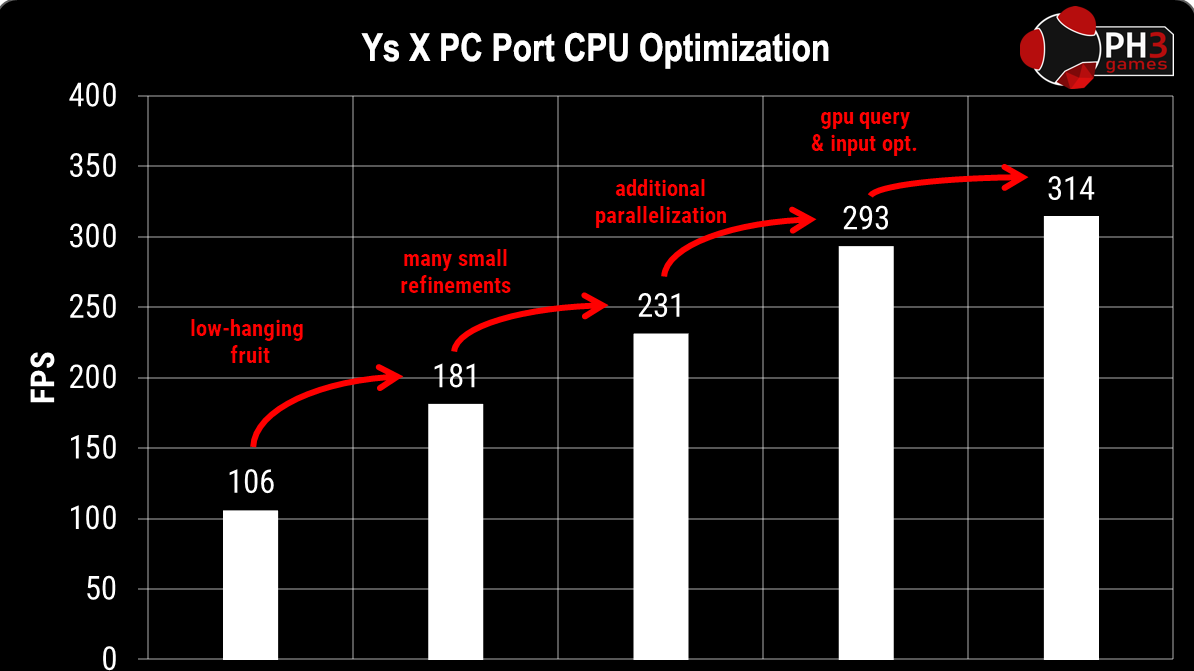
Past modder and current CTO of PC port developer PH3 Games Durante detailed taking an intensive scene from Ys X: Nordics running at 106 FPS and taking it to 314 FPS after just four optimization runs.
As a modder, Durante is best known for having made "DSfix" for the original Dark Souls (2012) PC port launch, which enabled several integral features for PC gamers, including unlocking the game for a 60 FPS cap that wouldn't officially come to PC until Dark Souls Remastered (2018). But of course, a developer working at a PC port development studio given direct access to a game's inner workings and the ability to change it outright will have much more opportunity to change the underlying experience, and the performance gains on the table here demonstrate as much.
According to the process detailed by Durante, seafaring action JRPG Ys X: Nordics started its life as a pre-Version 0.1 PC port that worked on Nvidia GPUs but ran below 5 FPS on AMD GPUs due to some specific DirectX 11 memory shenanigans. Fortunately, they were able to fix this before even shifting up to the working 0.1, and across the following four updates, they took a base performance level of 106 FPS in the most CPU-intensive scene and raised it to 314 FPS. No frame smoothing or "Frame Generation" techniques were used or required.
As Durante explains, the Balta Island scene optimized around was always rendered at maximum settings except resolution and anti-aliasing to ensure the game was CPU-bound for optimizations' sake. By the end of the process, the game also looked and ran slightly better in other ways—one optimization was actually removing a console optimization that lowered the animation FPS of distant characters, providing a huge boost to the PC ports' fluidity.
The optimization process from 0.1 to 0.2 is described as "low-hanging fruit," but addressing it raised FPS from 106 to 181. Subsequently, making "many small refinements" brought that up to 231 FPS in Version 0.8, and two further updates finally brought that up to 293 and then 314 FPS, saving additional CPU parallelization and GPU query/input optimizations for last. While these may sound important for performance and are, Durante notes that it's essential to do things in a careful order since "the more optimized the software becomes, the harder it is to make further headway."
If existing game reviews indicate anything, the final release seems quite performant and pretty fun. A free demo is available on all platforms, including Steam, so you can test this performance yourself.
Hopefully, more major studios shipping PC ports, like Square Enix with its brutally underperforming Final Fantasy XVI, will take note of developers following good practices like these and follow suit. While an FFXVI Fix mod does exist to alleviate its awful performance, it shouldn't ever be the imperative of unpaid modders to fix a game being sold for money on PC.







